Conveners
Gamma Rays
- Aldo Morselli (Istituto Nazionale di Fisica Nucleare)
Gamma Rays
- Aldo Morselli (Istituto Nazionale di Fisica Nucleare)
Gamma Rays
- Teresa Montaruli (university of Geneva)
I would argue that very high energy (VHE) gamma rays play a key role in the multimessenger exploration of the universe. On the cosmic-ray side, they allow us to study the emission mechanisms of Galactic accelerators with an unprecedented level of detail. On the neutrino side, we have now a handful of potential Galactic Pevatrons, and also VHE gamma rays were observed from a flaring active...
Since July 2021, the LHAASO experiment is fully operational and collecting data.
The Nature paper in 2021, revealing 12 VHE new sources, was just the start of
LHAASO science, revealing the huge scientific potential of this experiment.
Many Analysis efforts in different areas are ongoing and several results are already published.
In this contribution, we will show some highlights from...
The Fermi Gamma-ray Space Telescope started its science
operations on August 2008. The Large Area Telescope (LAT) is the main instrument onboard Fermi. It is an imaging, wide field-of-view pair conversion telescope able to detect photons in the energy range from about 20MeV up to the TeV region and it is still in excellent operating condition after 14 years of observation. The Fermi LAT is...
The Southern Wide-field Gamma-ray Observatory (SWGO) is the proposal for a new ground-based gamma-ray instrument in the Southern Hemisphere, which will use an array of water-Cherenkov based particle detectors to provide continuous monitoring and regular scanning of a large portion of the sky at the very- and ultra-high-energies (VHE and UHE, respectively). At the low energy side, SWGO aims to...
The Crystal Eye idea comes from the follow-up of two gravitational waves events: GW170817 and GW190425. Both events were referred to neutron star mergers. In the first case Fermi-GBM and INTEGRAL claimed the detection of a short Gamma Ray Burst (GRB 170817A) and in order to follow up and target the GW electromagnetic counterparts, a huge effort has been made by other...
Recent detections of gravitational wave signals and neutrinos from gamma-ray sources have ushered in the era of multi-messenger astronomy, while highlighting the importance of gamma-ray observations for this emerging field. AMEGO-X, the All-sky Medium Energy Gamma-Ray Observatory eXplorer, is an MeV gamma-ray instrument proposed to the 2021 call for medium-sized explorer missions. AMEGO-X will...
Star-forming and starburst galaxies are well-motivated astrophysical emitters of high-energy neutrinos and gamma-rays through hadronic collisions. Indeed, they are well-known cosmic-ray "reservoirs" thanks to their high magnetic fields capable to confine high-energy protons within their cores. Interestingly, the cosmic-ray transport in such extreme environments can be affected by the elastic...
Stereoscopic observations with the High Energy Stereoscopic System (H.E.S.S.) started 20 years ago. Installed at a pristine site in the Khomas highland of Namibia, H.E.S.S. is providing unprecedented observations of the very-high-energy gamma-ray sky in the Southern hemisphere. The early phase of the experiment was largely dedicated to a deep scan of the Galactic Plan, revealing a surprisingly...
The Very Energetic Radiation Imaging Telescope Array System (VERITAS) is an array
of four 12m Imaging Atmospheric Cherenkov Telescopes (IACTs), located at the Fred
Lawrence Whipple Observatory in Arizona, USA, that has been in operation since
2007. VERITAS conducts research in a variety of areas including Galactic science
(supernova remnants, pulsar wind nebulae, binary systems),...
MAGIC (Major Atmospheric Gamma-ray Imaging Cherenkov telescopes) is a system of two Cherenkov telescopes located on the Canary island of La Palma (Spain), at the Roque de Los Muchachos Observatory, and operating in stereo mode since 2009. their design and dedicated trigger system allows to reach an energy threshold of 50 GeV, which can be lowered to 15 GeV when using the Sum-Trigger-II. This...
In the last decades an incredible amount of evidence for the existence of dark matter has been accumulating. At the same time, many efforts have been undertaken to try to identify what dark matter is.
Indirect searches look at places in the Universe where dark matter is known to be abundant and seek for possible annihilation or decay signatures. Indirect searches with the Fermi Gamma-ray...
The Large-Sized Telescopes (LSTs) of the Cherenkov Telescope Array (CTA) are designed for gamma-ray studies focusing on low energy threshold, high flux sensitivity and rapid telescope repositioning. The LST has a tessellated parabolic mirror of 23 m diameter and a weight of about 100 tons, with the capability of pointing to any position in the sky in 20 seconds or less to catch transients. A 2...
The Schwarzschild Couder Telescope (SCT) is a dual mirror Medium-Sized telescope proposed for the Cherenkov Telescope Array (CTA), the next-generation very-high energy (from about 20 GeV to 300 TeV) gamma-ray observatory. The SCT design consists of a dual-mirror optics and a high-resolution camera with a field of view (FoV) of 8 degrees, which will allow exceptional performance in terms of...
This project investigates a new methodology to search for periods in
light-curves of high-energy gamma-ray sources such as Active Galactic Nuclei
(AGNs). High-energy light curves have significant stochastic components, making
period detection somewhat challenging. In our model, periodic terms, drifts of
the light-curves and random walk with correlation between flux points due to
colored...

